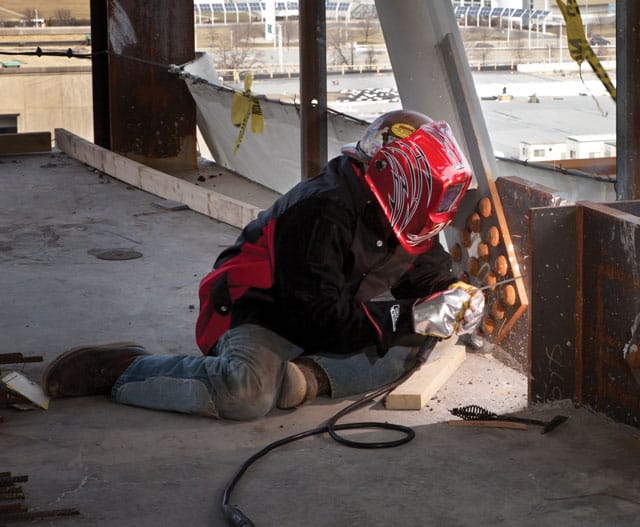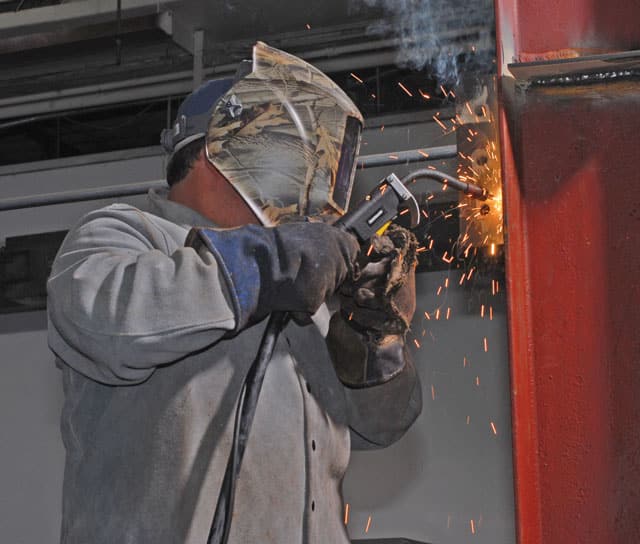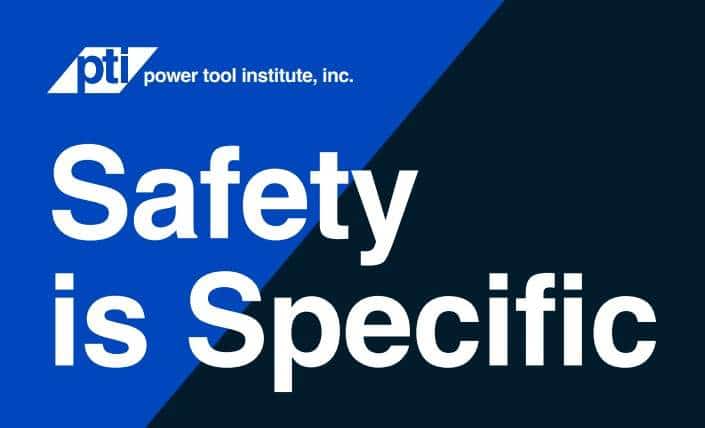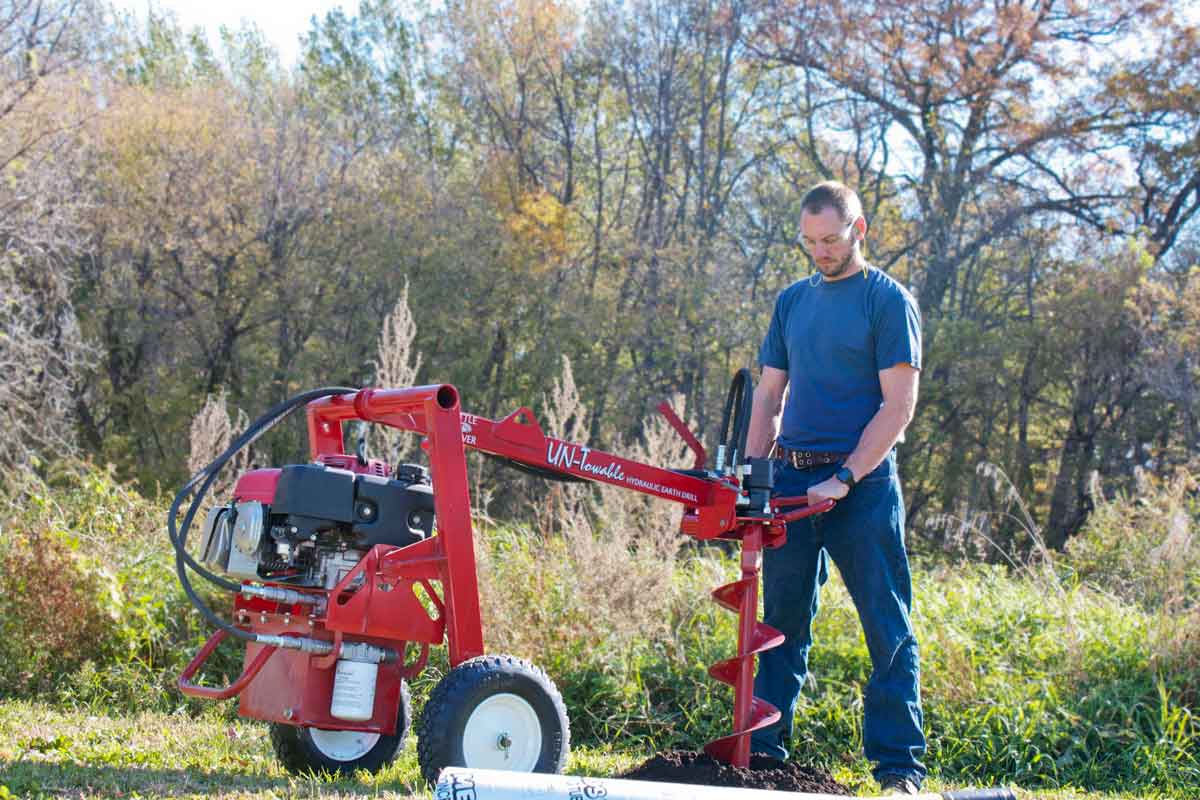Welding Filler Metals Haven’t Changed Much, But Their Processes Have

We talk a lot about welding equipment and processes — that’s the sexy side of welding marketing — but the science and application of welding filler metals is just as critical to the process. In many “construction” applications — be it structural steel or supporting rails and structures — the filler metal to be used is determined by a specification or code.
What has changed in recent years are the processes — and the processes have evolved to potentially allow for the use of filler metals in a different form than in the past (typically either a Stick electrode or a self-shielded Flux Cored wire, although there are some dual-shielded applications as well). This article will take a look at the current filler metal playing field as it relates to common construction applications. Note: While some of what follows may carry over, this will typically not cover process or cross country pipe applications. Those require a whole additional level of discussion related to process and filler metals.
Stick Electrodes (SMAW)
The great narrative in recent years has revolved around a single electrode process (Stick/SMAW) versus a continuously fed self-shielded wire process (Flux Cored/FCAW). While some have been eager to write off Stick welding, it has a strong foothold in the industry as it’s often the first process a welder learns and it has a long history of quality.
“I was told 25 years ago that Stick was a dying welding process,” says Lisa Byall, portfolio manager — welding consumables, Lincoln Electric. “I can definitively say that we’re seeing just as much Stick welding today as we have in years past. There’s just so many applications that still use it because of portability, and many welders are trained in that process.”
“Every application has the right process, and in some applications, Stick electrodes is the right process,” says Dwight Myers, product business manager, ESAB. “It’s the advantage in portability in that they don’t have to have a wire feed unit, they don’t have to have shielding gasses, they don’t have to string long cables — the newer equipment makes a whole lot of sense because now I can have equipment close to me on the jobsite. I’m not running off of a six-pack 10 floors below me — I can actually pull that machine up to where I’m welding.”
The name of the game in the construction industry is low hydrogen, and many of the leading filler metal providers — including Lincoln, ESAB and Hobart — all have low hydrogen products to choose from. Why is hydrogen bad? Hydrogen leads to moisture in the weld, which is a catalyst for hydrogen-induced cracking.
Hydrogen levels are identified in the American Welding Society (AWS) designation for each product, i.e. AWS 7018 H8. The “H” is for hydrogen, and the following number indicates the diffusible milliliters of hydrogen in 100 grams of deposited weld metal. The peak rating for construction applications — where structural integrity is critical — is H4R. The “R” in that designation indicates that the filler metal is moisture resistant and can be exposed to the elements (up to 80 degrees Fahrenheit and 80 percent relative humidity) for up to nine hours without having to be reconditioned in a rod oven.
“[With an H4R electrode] I can give my welder his allocation of electrodes for the shift, and I don’t have to worry about him having a dry rod oven or worry about having him re-bake them because they’ve been exposed for four to six hours while he’s out there welding,” says Myers. “So I cut down on that time that my welder has to get back to the tool crib to get fresh electrodes. I cut down on the fact that I don’t have to have a dry rod oven.”

Self-shielded flux cored processes provide advantages in terms of deposition rates and deposition efficiency over long welds.
Filler metal providers achieve those low hydrogen levels by baking moisture out of the coating in the manufacturing process. An unintended side effect of this process is that the coating could become brittle and more susceptible to damage during shipment and handling (essentially wasting product) — but these manufacturers have worked hard to improve the durability/flexibility of the coating to optimize total usable percentage of filler metal purchased. Manufacturers have also been working to introduce new welding power sources that best complement these electrodes and the environments they work in.
“Welders are skilled professionals — when they put a weld bead down, they are putting their signature down. The easier you can make it for your welder to do a good job, the happier and more productive they are going to be,” says Myers in reference to ESAB’s Atom Arc Acclaim electrodes in combination with the company’s new Renegade ES 300i Stick power source. “[It provides] a good, driving and digging all-positions electrode, but it softens the arc up in making it a little better, better control of the arc, a better slag system in there that makes it easier for me to go out of position. It is enhanced to give the welder a higher quality weld with a lot less effort.”

If you’re welding thick sections, restrained joints or higher-strength material, the lower the hydrogen the better.
Self-Shielded Flux Cored (FCAW) Wire
Self-shielded Flux Cored wires and processes have become more widely adopted across the industry — especially in applications where long and continuous welds are required.
“[Self-shielded Flux Cored] wires are significantly more efficient in terms of operator factor and deposition efficiency, and they require less changeover than Stick electrodes,” says Tim Hensley, product manager, Hobart. “Not only can welding operators spend more time welding, but more filler metal ends up in the weld.”
“[The process is] maybe not as portable as Stick, because you have a wire feeder, gun and cable assemblies, and other accessories, but it’s certainly very conducive to welding outdoors,” says Byall. “It can withstand welds in excess of 30 miles per hour — even if you’re in windy areas or high up on a girder or an I-beam, it’s an ideal process.”
Hobart has focused much of its efforts here on its Fabshield XLR-8 wire, an all-position self-shielded Flux Cored wire with low hydrogen properties (AWS E71T-8JD-H8) that is usable under AWS D1.8 and is particularly well suited for structural steel and bridge construction applications.
“It allows for improved deposition rates compared to Stick electrodes, along with higher deposition efficiencies,” says Hensley. “The wire also provides high impact strengths at low temperatures and excellent mechanical properties within a wide range of heat inputs.”
According to Myers, ESAB also has self-shielded Flux Cored wires in their offering that meet the H8 requirements. Coreshield 8 (AWS E71T-8JD-H8) is used in many structural applications meeting the requirements for the “D” designator when AWS D1.8 Seismic Supplement is used. It is not unusual for the contractor to use both Atom Arc and Coreshield on a jobsite depending upon the specific application. Byall notes that Lincoln also provides two H8 filler metals for current and future low-hydrogen demands.
“If you’re welding thick sections, restrained joints, higher-strength material — the lower the hydrogen the better,” she says. “Another reason we did it is that that Canadian Welding Bureau [CWB] has instituted a requirement for the construction industry to have products in those types of applications that meet H8 — and it’s just a matter of time before other agencies adopt the same premise as CWB.”
 Buy American
Buy American
President Trump signed the “Buy American, Hire American” executive order on April 18, 2017. Past such orders have mandated that any public project with federal funding use only American-made iron and steel. These provisions don’t just apply to the base material — it also extends down to the filler metal. “With the emphasis on infrastructure and Buy America, Buy America products are becoming more and more in demand from customers with any project at all that has a federal dollar in it,” says Dwight Myers, product business manager, ESAB.

 Buy American
Buy American

The post you submitted here is very informative. Welding is a fabrication or sculptural process that joins materials, usually metals or thermoplastics, by using high heat to melt the parts together and allowing them to cool causing fusion. Welding is distinct from lower temperature metal-joining techniques such as brazing and soldering, which do not melt the base metal.